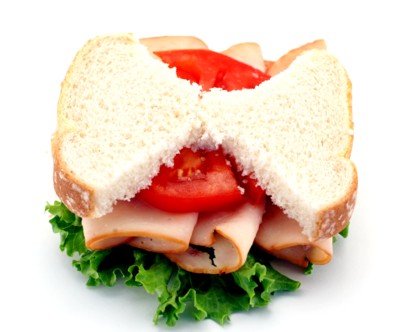Book Review: The 17-Day Diet
 Monday, May 16, 2011 at 11:09AM
Monday, May 16, 2011 at 11:09AM  The 17 Day Diet, one of the latest best selling diet books is new wrapping paper on an old package—high-protein/low-carb diets.
The 17 Day Diet, one of the latest best selling diet books is new wrapping paper on an old package—high-protein/low-carb diets.
Author Dr. Mike Moreno claims that “you’re not apt to plateau” on his plan because of his “carefully designed balance of food and exercise [that] adjust your body metabolically so that you burn fat, day in and day out.” Moreno says that, “by changing calorie counts with each 17-day cycle you prevent your body from adapting,” and he calls this notion “body confusion.”
When looking at fad diets you’ll find that they all consist of two key components:
1. A “magical breakthrough,” and
2. A secret combination of eating the "right things, in the right way.”
The magical breakthrough Dr. Moreno proposes and calls “body confusion,” is the notion that switching back and forth between various calorie levels not only prevents “weight loss plateaus,” but turns you into a “fat-burning machine.” Switching between calories levels, however, is actually the same magical breakthrough first proposed by Martin Katahn PhD who authored The Rotation Diet 24-years ago (1987). If you haven't heard of the Rotation Diet, that may be a clue to how well it worked.
Moreno cites a study in the American Journal of Clinical Nutrition[i] to support claims (on page 62 of his book) that “alternate-day-fasting” “triggers sustained weight loss (no frustrating plateaus),” and the “weight that is lost is mostly fat.” Firstly, the 17-Day Diet protocol doesn’t utilize alternate-day-fasting (meaning that you eat nothing every second day). Secondly, the review study Moreno cites was looking at chronic disease prevention and has no discussion of plateaus, or metabolic rate. Finally, the review actually shows that alternate-day-fasting has little if any effect on body weight in animals or humans because they are allowed to eat all they want on the eating days (therefor compensating for the fasting days). What the review study actually says doesn’t really matter since Dr. Moreno knows that few if any people looking for a new magic diet will take the trouble to find out.
When it comes to fad diet books the warning “caveat emptor” (let the buyer beware) couldn’t be more true. We also all know the rule, that if it sounds too good to be true it probably is. You can take that to bank with fad diets.
Dr. Moreno doesn’t cite the only study in the medical literature that seems to have actually looked at rotating calories between various levels. That may be because it found neither an enhanced weight loss effect, or any beneficial effect on metabolic rate.[ii] So much for the “magical breakthrough.”
The purpose of the second key component you always see in fad diets books (“eating the right things in the right way") is to convince you to follow a eating plan of around 1,200-calories (in this case), that will produce significant early weight loss. However, the weight loss is due to simple calorie restriction, not to the magic “eating the right things in the right way.” Additionally, as I’ve discussed elsewhere, high-protein/low-carb diets especially accentuate the appearance of early weight loss due to maximizing water loss.
Another misleading claim Moreno puts forth is that, “digesting protein takes more energy (calories) than digesting carbs or fat does.” While that statement is technically true, it is at the same time false from a practical standpoint because the difference doesn’t have a clinically significant effect on weight loss. (Get the facts on protein and weight loss.)
Dr. Moreno is honest on page 103 where he tells us,
“At this point in the book, I have to be really, really honest and talk about a big unmentionable thing, something no one wants to acknowledge. You will always be on some kind of diet. You will not be able to return to your former eating habits and keep the weight off…” “So you’ve always got to diet, if you want to maintain this weight loss.”
Okay. So if you make it through his first three 17-day cycles, in the fourth cycle you can look forward to “dieting” Monday through Friday lunch, then “eating your favorite foods in moderation” through Sunday evening. Moreno calls this a “new lifestyle,” however it looks like the permanent diet he mentioned on page 103.
If you choose to follow the 17-Day Diet you will lose weight (due the low-calorie eating plans you’ll be following). You might also drive yourself crazy trying to jump through all the silly magic hoops. My advice is save your money and your sanity. There is no magic. All there is is eating less and moving more, and you are the best author of how to do that in your life.
Best,
-Dorene
If you don’t want to miss this blog you can subscribe to my RSS feed or sign up to get my blog by email.
What is your question or comment? Comment here, or email me: dorene@beyonddiets.com.
If this is the kind of information you appreciate, you may also like my book: The NEW Healthy Eating & Weight Management Guide.
[i] Varady, KA. Alternate-day fasting and chronic disease prevention: a review of human and animal trials. Am J Clin Nutr 2007;86:7-13.
[ii] de Groot LC, et al. Adaptation of energy metabolism of overweight women to altering and continuous low-energy intake. Am J Clin Nutr 1989;50(6):1314-23.
[iii] Heilbronn LK, et al. Alternate-day fasting in nonobese subjects: effects on body weight, body composition, and energy metabolism. Am J Clin Nutr 2005;81:69-73.

Reader Comments (1)
These fad diets consistently turn out to be a shell game that tricks you into eating less calories. As you say, it's better to figure out your most comfortable way to reduce consumed calories and increase exercise calories, in a way sustainable for your lifestyle. Great review!